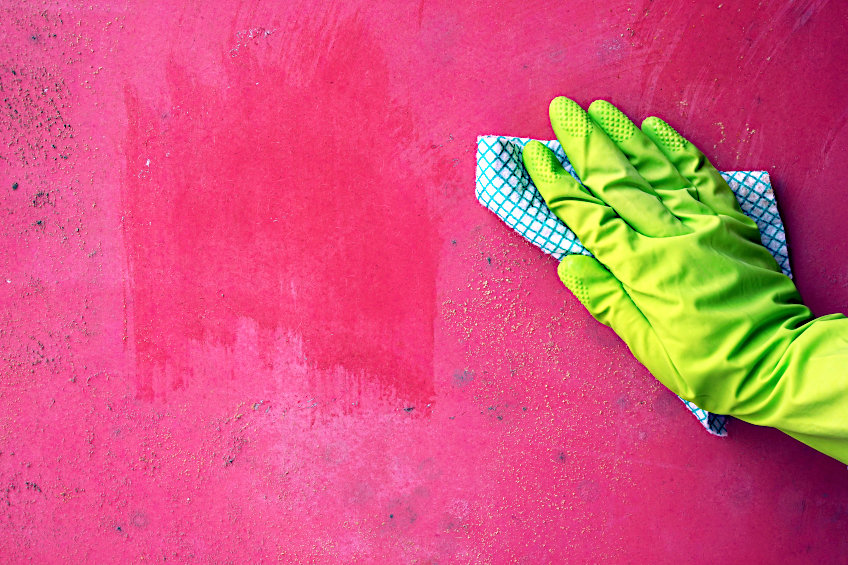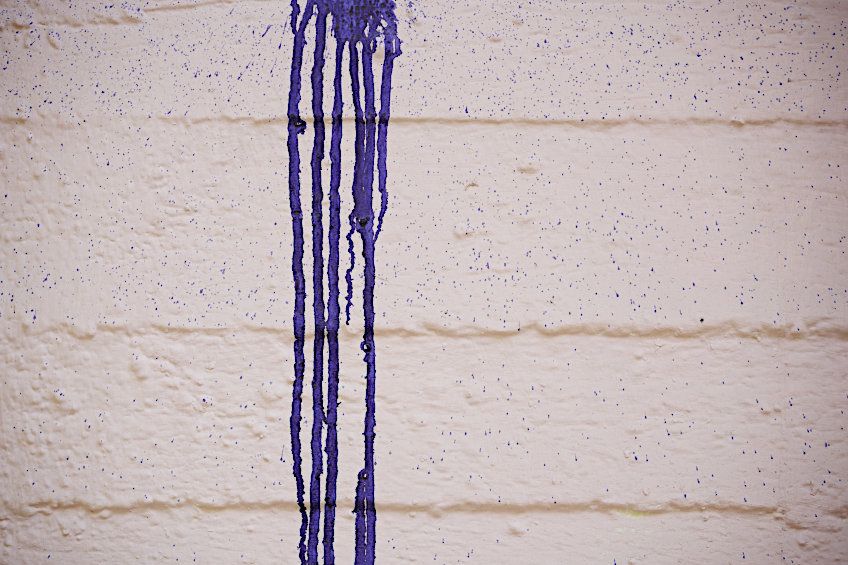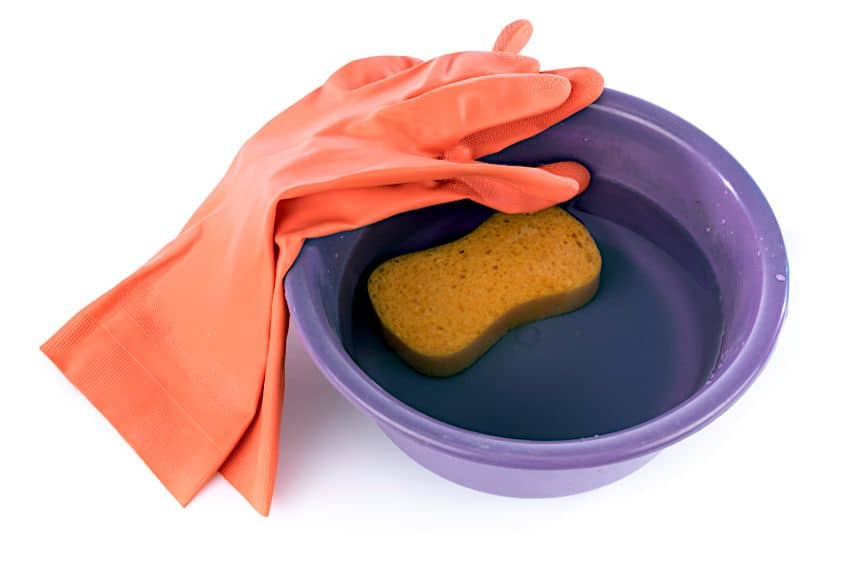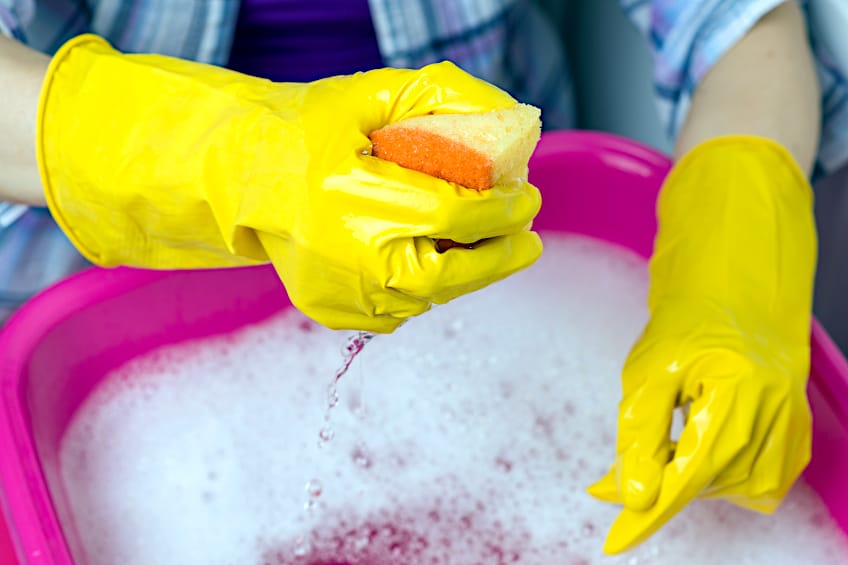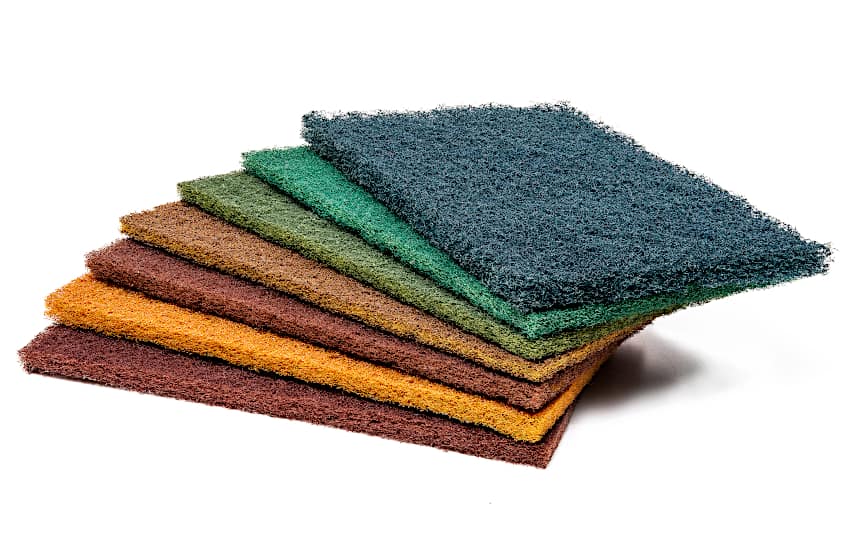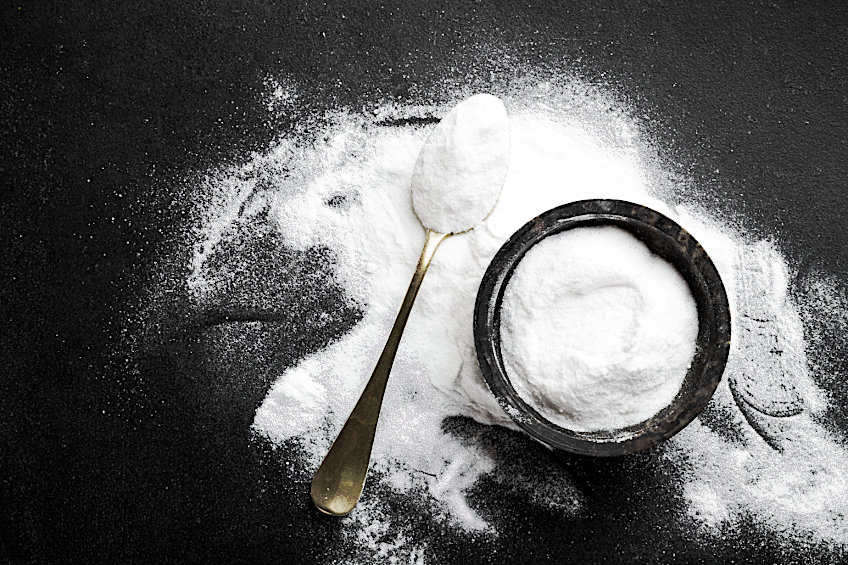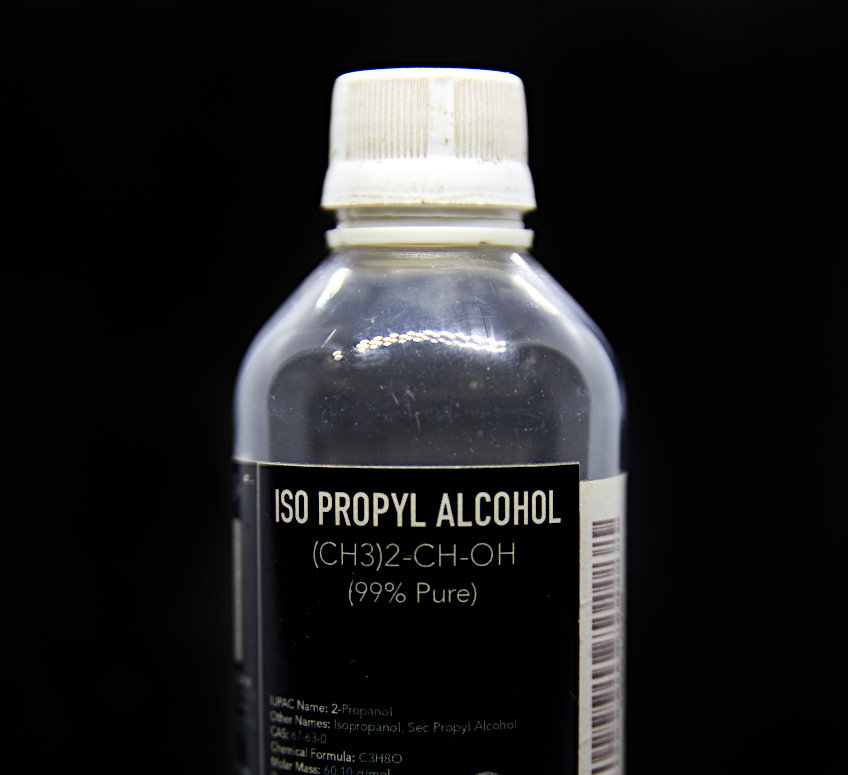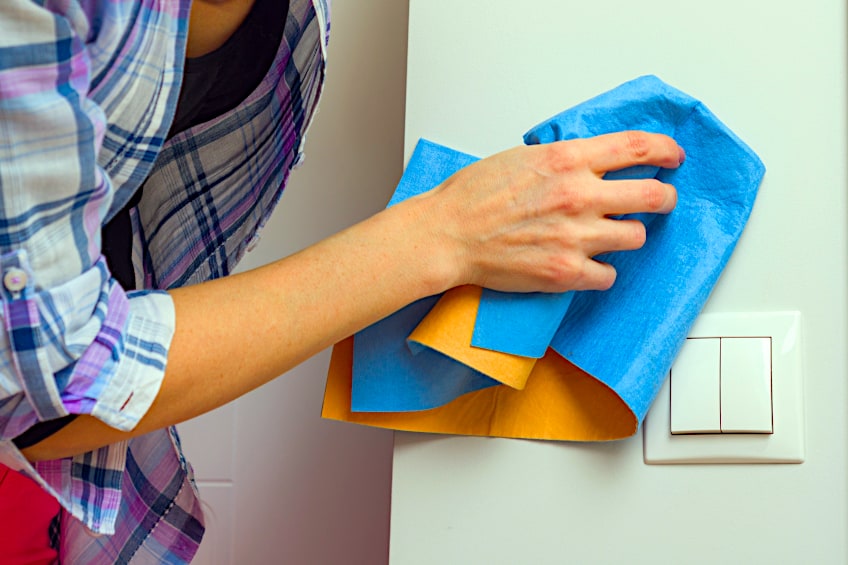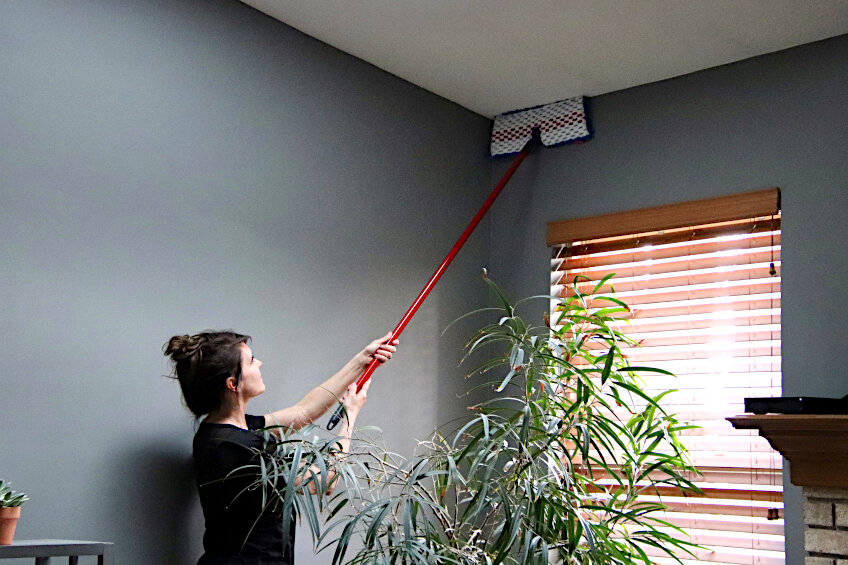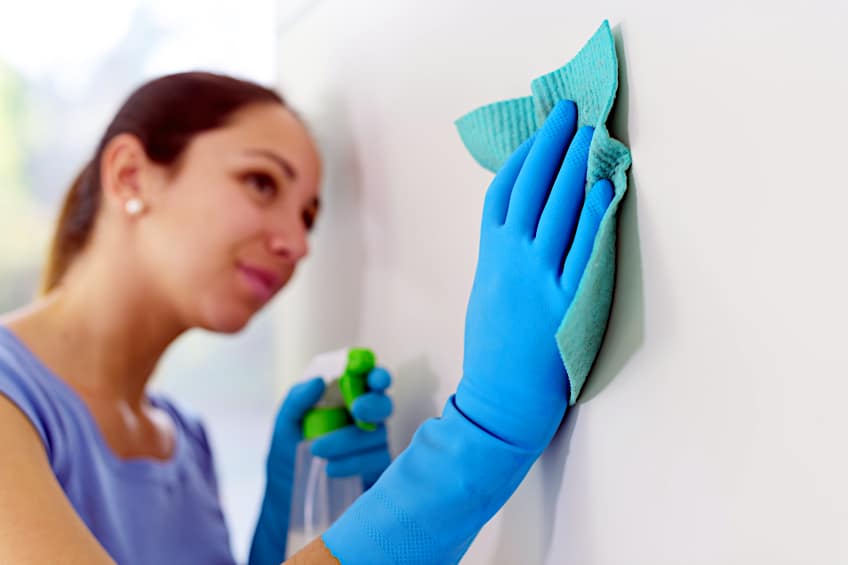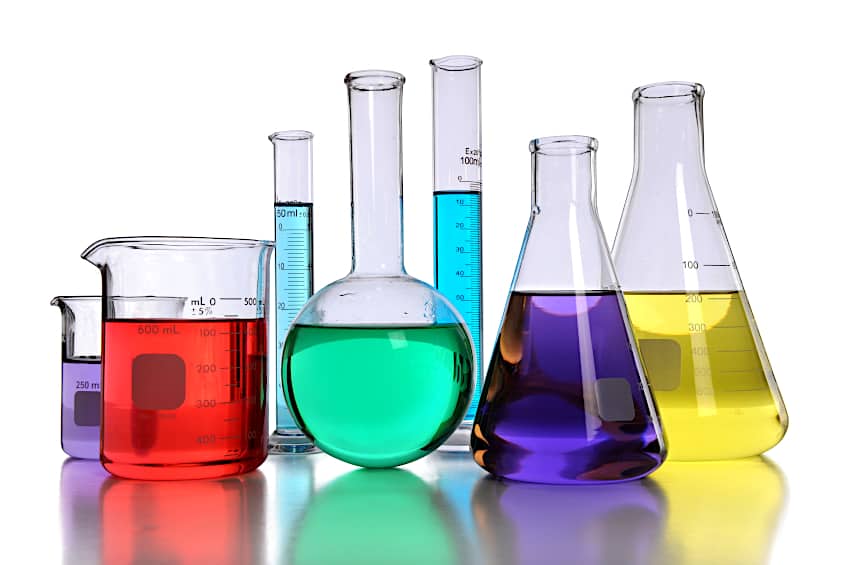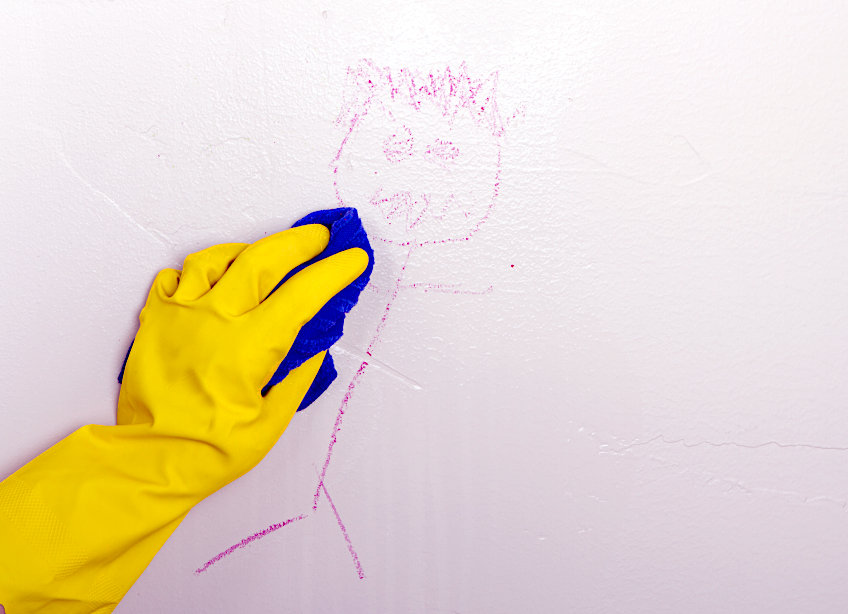How to Clean Painted Walls – Paint Finish Maintenance Tips
This post may contain affiliate links. We may earn a small commission from purchases made through them, at no additional cost to you. You help to support resin-expert.com
Walls make up a huge portion of our immediate everyday environments, and when they are dirty, they can really muddy the overall look of a space. However, all walls (especially painted walls) are different, particularly when painted with different types of paint. Cleaning painted walls incorrectly can damage your paint job quite badly, so let’s have a look at how to clean painted walls, and what tools you might need to ensure that your walls are dirt-free for the foreseeable future.
Table of Contents
Important Factors to Consider When Cleaning Different Paint Types
Since there are so many different types of paints and finishes, it can be challenging to remember which cleaning methods work for which paint types and surfaces. To make things a bit easier for you we’ve created a short list of paint types, surfaces, and cleaners you could encounter and how their characteristics could affect your cleaning experience.
Surface Texture
The surface texture of the paint will impact how you are able to clean it. If the surface texture is rough, you might need to use softer brushes to avoid damaging the surface of your paint.
This might seem counterintuitive considering that that textures surface tend to hold more dirt, but the gentler you are, the less you risk damaging your surface.
Type of Stain
When cleaning dirty walls, you should do your best to understand the different types of stains you could encounter. Grease, dust, scuff marks, and water stains, and even accidental paint drips require different cleaning products and methods to remove. Using the incorrect product or method could cause damage to your paint, or simply be ineffective in removing the stain.
Type of Paint
There are many paint types used to paint both interior and exterior walls. These paints have different base elements, some of which respond negatively to certain chemicals or excessive exposure to moisture.
Identifying the type of paint that you are attempting to clean is therefore very important to the cleaning process.
Cleaning Products
There are many homemade and off-the-shelf products to choose from when cleaning painted walls. They all have varying degrees of effectiveness depending on the type of paint and stains you are dealing with, so make sure you have the right cleaning products for the type of paint and stain you intend to clean.
Avoid using highly abrasive cleaning products on wall paint whenever possible.
Cloths and Sponges
The substances used to clean your walls is important, the cloths and sponges you use to apply them are equally so. Microfiber cloths tend to be the best at both cleaning surfaces (and removing streaks) while soft sponges with scrubbing ends allow you to soak the surface and apply friction where necessary.
Ventilation
The type of chemicals sometimes used for stain removal can produce harmful fumes. Inhaling these fumes can lead to respiratory discomfort and irritation to the eyes.
Therefore, ensuring your workspace is well-ventilated is an extremely important part of the preparation process and should not be overlooked.
How to Clean Painted Walls
Now that you have some of the general rules surrounding some common paint types and finishes, we have prepared a few short tutorials detailing how to clean walls coated with these paint types and what tools and/or products you will need to ensure your walls are cleaned without damaging the paint or wall underneath.
How to Clean Gloss Paint
Gloss paints are one of the most durable paint types and can be scrubbed using detergents when stained with grease or sludge. However, we recommend simply using some soap and water when doing general cleaning and maintenance and using a soft sponge as common dirt and grime tend not to stick to this paint type.
Wondering how to wash painted walls coated with gloss paint? The most efficient way is to grab a soft sponge, dip it into a bucket containing some soapy water, and gently wash the surface of your wall.
Once your wall has been cleaned, allow it to air dry and then use a microfiber cloth to remove any remaining moisture and avoid any nasty streaks across the surface.
How to Clean Semi-Gloss Paint
Gloss and semi-gloss paint are pretty similar and therefore can be cleaned using many of the same substances and methods. Semi-gloss paint has a bit more texture to it which means it can retain a bit more dirt and grime compared to its full-gloss counterpart.
Semi-gloss paint is slightly more durable and therefore can take a bit more scrubbing.
Here’s how to wash painted walls coated with semi-gloss paint. Like gloss paint, you can gently wash the surface using a soft sponge dipped in some soapy water, and for more stubborn stains like grease and oil, you can use a degreaser and a thorough scrubbing. In both instances, allow the wall to air dry and then use a microfiber cloth to remove any excess moisture and streaks.
How to Clean Satin Paint
Satin paints are a good example of a paint that both looks good and can withstand the test of time. Many people choose a satin finish because it is easy to maintain, especially where cleaning is concerned. Satin paint doesn’t have an overly textured finish, so while it can sometimes be challenging to clean, you can scrub it thoroughly with a scouring pad if needed.
How do you clean satin paint, you ask? Well, since satin paint is highly resistant to the effects of moisture, you can once again use a mixture of warm water and soap to remove light dirt and grime.
If you do find yourself faced with a particularly tough stain, we highly recommend avoiding harsh chemicals like oven cleaner, as satin paint is highly susceptible to chemical damage.
When using the soap and water method simply tackle the surface with moderate pressure until the stain has been removed and then allow the surface to air dry. When using a more powerful cleaner, dilute it in some water, get some on a clean cloth or sponge, clean the surface, and then wipe the surface with a clean cloth to neutralize any lingering chemicals.
How to Clean Latex Paint
Latex-based paints are more durable than most of us give them credit for, and they tend to handle stains pretty well. Latex-based paints tend to be a bit more sensitive though, so it’s best not to scrub too vigorously and not to use extremely abrasive cleaning products like the ones used on sealed flooring or stone surfaces.
Cleaning painted walls coated with latex-based paint requires mixing some warm water with some all-purpose cleaner.
Using a sponge dipped in this mixture, clean the surface using moderate pressure, paying special attention to frequently touched areas. When the surface is nice and clean, rinse your sponge in clean water, give the wall another once over, and allow it to air-dry before wiping it down with a clean microfiber cloth.
Baking Soda (Optional)
If the non-abrasive cleaner isn’t working and you need a bit more firepower, you could try some baking soda. Mix a little bit of water with some baking soda to make a paste and tackle the surface with a clean cloth. Once the stain has been removed, rinse out your cloth and give the surface another once over before allowing it to air dry.
Rubbing Alcohol (Optional)
Another good option if your cleaner isn’t working is to use some rubbing alcohol. Using rubbing alcohol to remove stains on painted walls is very much the same as using it on any other surface. Simply get some rubbing alcohol on a clean cloth and rub the affected area until the stain has been removed and allow the area to air dry.
How to Clean Oil-Based Paint
Even though oil-based paint tends not to pick up stains very easily, it can be challenging to clean when certain substances are introduced to the surface. There are a couple of ways of cleaning painted walls coated with oil-based paint, but one of the most commonly used substances is a DIY solution that is both simple and effective.
What is this magic formula, you ask? All you need to do is mix some warm water with some liquid dish soap, and a ¼ tablespoon of white vinegar. Give the mixture a good stir to ensure all of the component parts are dissolved and the mixture is ready to use. Your tool of choice when cleaning oil-based paint will be a sponge or microfiber cloth.
Unlike some of the other paint types we’ve covered so far, you will need to ring the sponge or cloth out first before tackling the surface. Slightly wash the surface with a damp cloth or sponge until the stain has been removed, and if your stain is particularly stubborn, we recommend applying some of the mixture to the surface and allowing it to soak in for a bit before using a cloth to remove the stain.
Once the stain has been removed, it’s important to keep in mind that your mixture contains vinegar that will need to be neutralized to avoid potential damage to your paint.
To remove the vinegar, simply dip a clean cloth in some water, wipe the areas you have cleaned, and then allow them to air dry completely.
How to Clean Acrylic-Based Paint
Acrylic paint is one of the most commonly used paint types today, whether it comes to painting walls, flooring, or ceilings. It maintains its popularity because it is very low maintenance and it is exceptionally easy to clean, so you shouldn’t worry too much about cleaning acrylic-coated walls should you stain them.
What is the best tool for the job? Acrylic paint is generally quite resistant to moisture, so some good old-fashioned soap water, and a sponge can go a long way when cleaning acrylic paint.
Simply wet your sponge or cloth and begin cleaning the surface thoroughly, and when you are done allow the surface to air dry before giving it a final once over with a dry microfiber cloth.
Non-Abrasive Cleaner (Optional)
If you are finding that soap and water aren’t quite getting the job done, you could use some chemicals. Acrylic paint is not chemical resistant, so don’t use abrasive chemicals that could eat away at the surface of your paint. Ordinary cleaning products should get the job done pretty well, and you can help them along by cleaning the surface with a gentle sponge.
Apply your cleaner to the affected area of your wall and allow it to set in for a while. Once the stain starts to soften and rise, use your sponge to scrub the surface (with moderate pressure) and continue until the stain has been removed.
Give the area a once over with a clean cloth dipped in water and allow the surface to air dry.
How to Clean Eggshell Paint
Wondering how to clean walls with eggshell paint? Eggshell paint is an incredibly popular finish, but due to its texture, it can pick up quite a bit of dirt. However, it is quite easy to clean with just one additional step when compared to other commonly used paint types.
Eggshell paint tends to attract a lot of dust, more so than the usual dirt and grime.
Here’s how to clean walls with eggshell paint. First, you will need to remove the dust to avoid a wet, dusty sludge forming on the surface of your wall. To remove the dust you can use a mop with a cloth attachment or you could simply use a vacuum cleaner with a brush attachment to suck up all the little dust particles.
Once your wall has been dusted you can begin the cleaning process. You can use some warm water and dish soap to tackle any stains on the surface of your walls, simply dip a clean cloth or sponge into the water and scrub the surface of your wall using moderate pressure until the stains have been removed. Next, rinse out your cloth, wet it with some clean water, and wipe the surface of your wall. Allow your wall to dry once you are done.
How to Keep Painted Walls Clean
While cleaning painted walls is relatively easy, you can save yourself a lot of time and effort by ensuring they don’t get dirty in the first place.
There are a couple of simple things that you can do to ensure your walls are kept nice and clean.
To make things a bit easier for you we have prepared a list of a few maintenance tips you can follow to reduce dirt and dust buildup on your walls.
Dust Your Walls Regularly
This one might seem obvious, but life can get pretty busy and it’s easy to forget something as mundane as regularly dusting your walls. Dust can form a thin layer across the surface of your walls, causing them to look a bit discolored and they could trigger allergies or cause respiratory issues as well.
You can dust your walls using a mop with a cloth attachment, or a vacuum with a soft brush attachment too.
Clean Stains As Soon As Possible
Stains tend to happen accidentally, and when they’re small it’s easy to be tempted to simply clean it up later. However, given that dirt and grime tend to have far stronger adhesion when left on a surface longer, you should tackle stains of any kind as soon as possible to ensure you don’t waste any time or effort later on.
Avoid Excessive Exposure to Water
When cleaning walls, it can be easy to get carried away with the amount of water you use. Excessive exposure to water can cause some paint types to become weaker over time, and using too much water while cleaning walls can cause them to drip and create streak marks.
Watermarks can be extremely challenging to remove once they have formed.
Clean Your Walls Regularly
How often should you actually give your walls a thorough cleaning? Well, aside from cleaning up the odd stain you should ensure that you clean your walls at least once per year.
While you can clean your walls more often than this, once a year should be enough for the average dwelling.
The extent of air pollution where you live, as well as the size of the space can all affect how dirty your walls might get over time.
Ensure Constant Airflow
While dust can form under pretty much any condition, ensuring that you have a constant flow of air in space can stop dust from accumulating. The airflow ensures that all the little bits of dirt, hair, dead skin, and other particles don’t have time to settle on your walls and form the aforementioned layer that you will eventually have to clean.
Tips and Tricks for Cleaning Walls
As you can see the cleaning of painted walls can require many different approaches, but there are some universal tips and tricks you can follow to ensure you do the best job every time. Here are a few things you can do to improve your cleaning experience and some things you can avoid entirely as well. Happy cleaning!
Avoid Harsh Chemicals
There are many cleaning products that claim to be the best, but they often contain extremely abrasive chemicals that could soften and lift your paint. Using less abrasive chemicals that contain simple soap and “softer” additives can greatly reduce the potential damage to the surface of your walls.
Let the Cleaner Do the Work
It’s easy to get frustrated with a stain and begin to scrub the surface intensely. However, this could damage the surface of your wall rather than remove the stain.
Allow your cleaner to set in and then gently but vigorously scrub the surface of your workpiece to remove the stain or scuff mark.
There are exceptions to the rule, but for the most part, patience is key.
Know What You Are Dealing With
The first step to removing a stain is understanding what it is. Is it some grease that splattered on your wall while cooking? Is it a scuff mark from moving furniture around? Knowing what the blemish is will give you a good idea of what type of cleaner you need and how much pressure is needed to remove it.
Protect Yourself at All Times
When getting rid of stubborn stains, it’s easy to disregard your safety. Taking off your gloves to get better leverage or removing your eye goggles because they’re fogging up might seem like a good idea at the time, but it can lead to serious injury. Cleaning products can cause harm to both your skin and eyes, so always ensure you are wearing your personal protective equipment.
As you can see, walls need as much maintenance as any other surface in your home, and ignoring stains on your walls will only result in these stains becoming more difficult to remove. The best approach to maintaining your painted walls is to do regular upkeep and strive to ensure that you don’t accidentally stain your walls to begin with.
Frequently Asked Questions
What Is the Best Cleaner for Painted Walls?
When it comes to most paint types, the best cleaner for painted walls tends to be some warm water and ordinary dish soap. Commonly used paints generally don’t react well to more abrasive cleaners, so it’s best to use warm water, soap, and some elbow grease to clean any stains.
Can Painted Walls Be Steamed?
This depends on what type of paint you are working with. Water-based paints can be damaged and begin to peel when exposed to heat. To check what type of paint you are working with, simply test your steamer on a part of the wall that is out of sight, and if it lifts or bubbles, don’t use the steamer to clean it.
Should You Clean Walls Before Painting?
You should always clean your walls before painting them. Cleaning your walls ensures that the sanding and priming process goes smoothly by removing any particles that could contaminate the surface and your equipment, which could cause your paint to adhere poorly.


